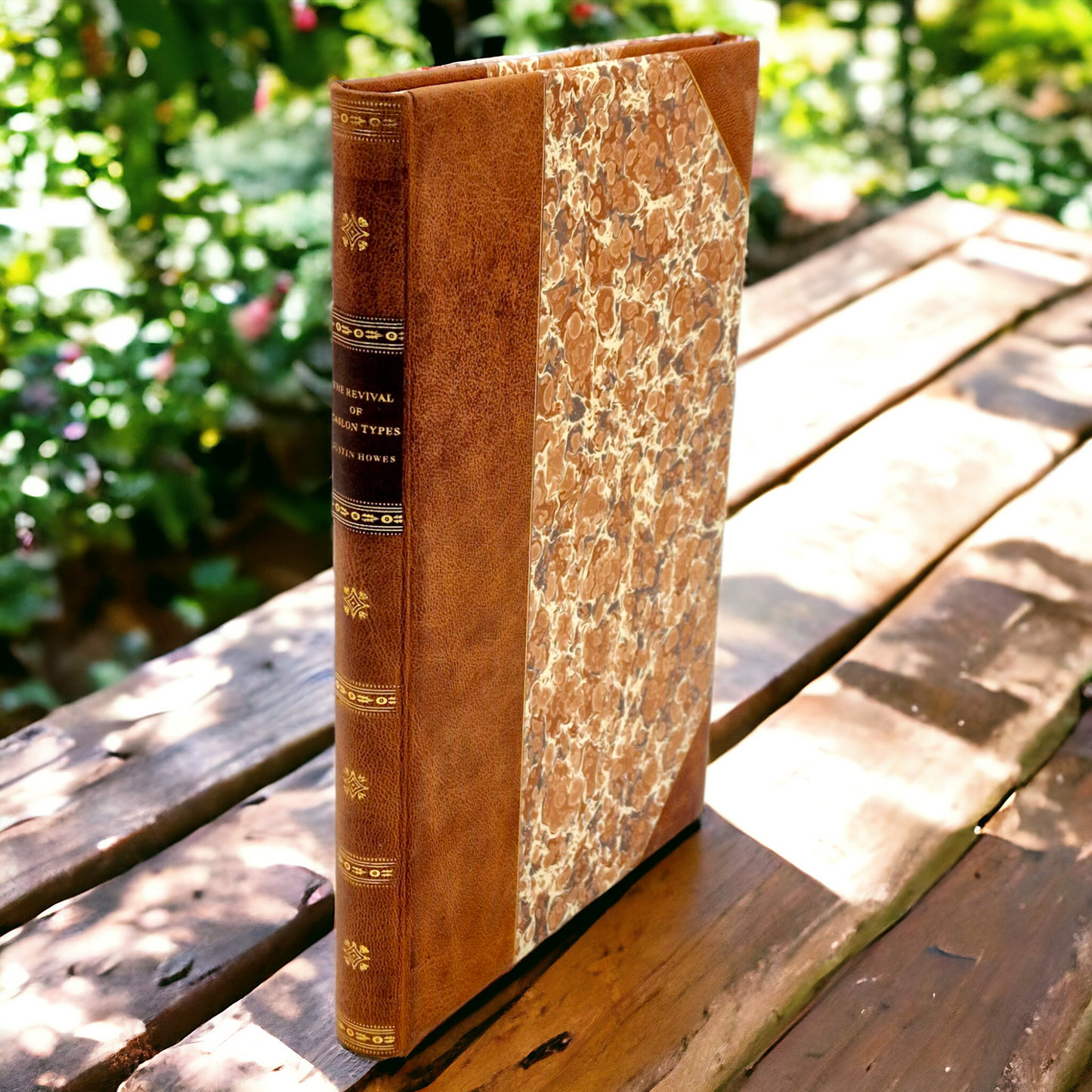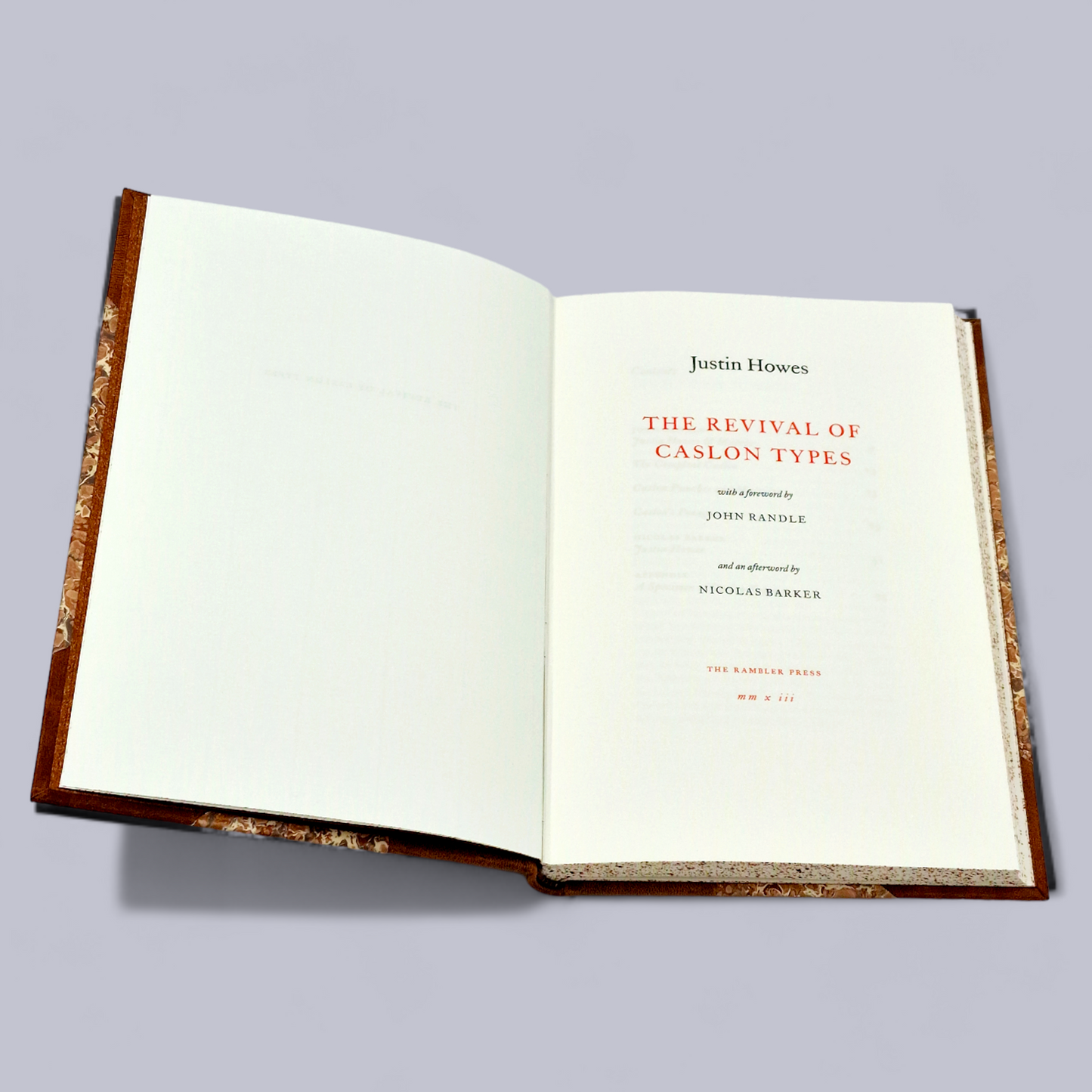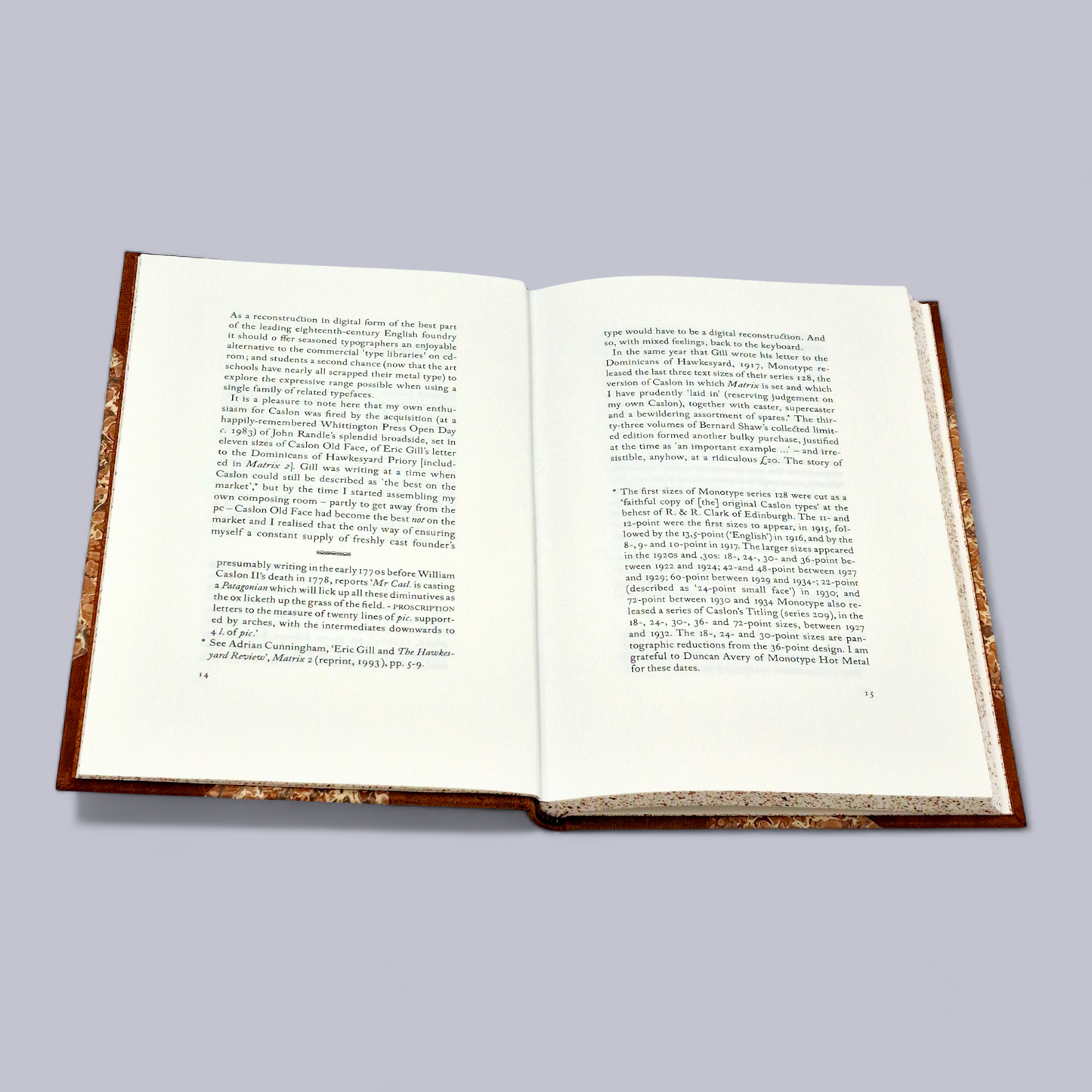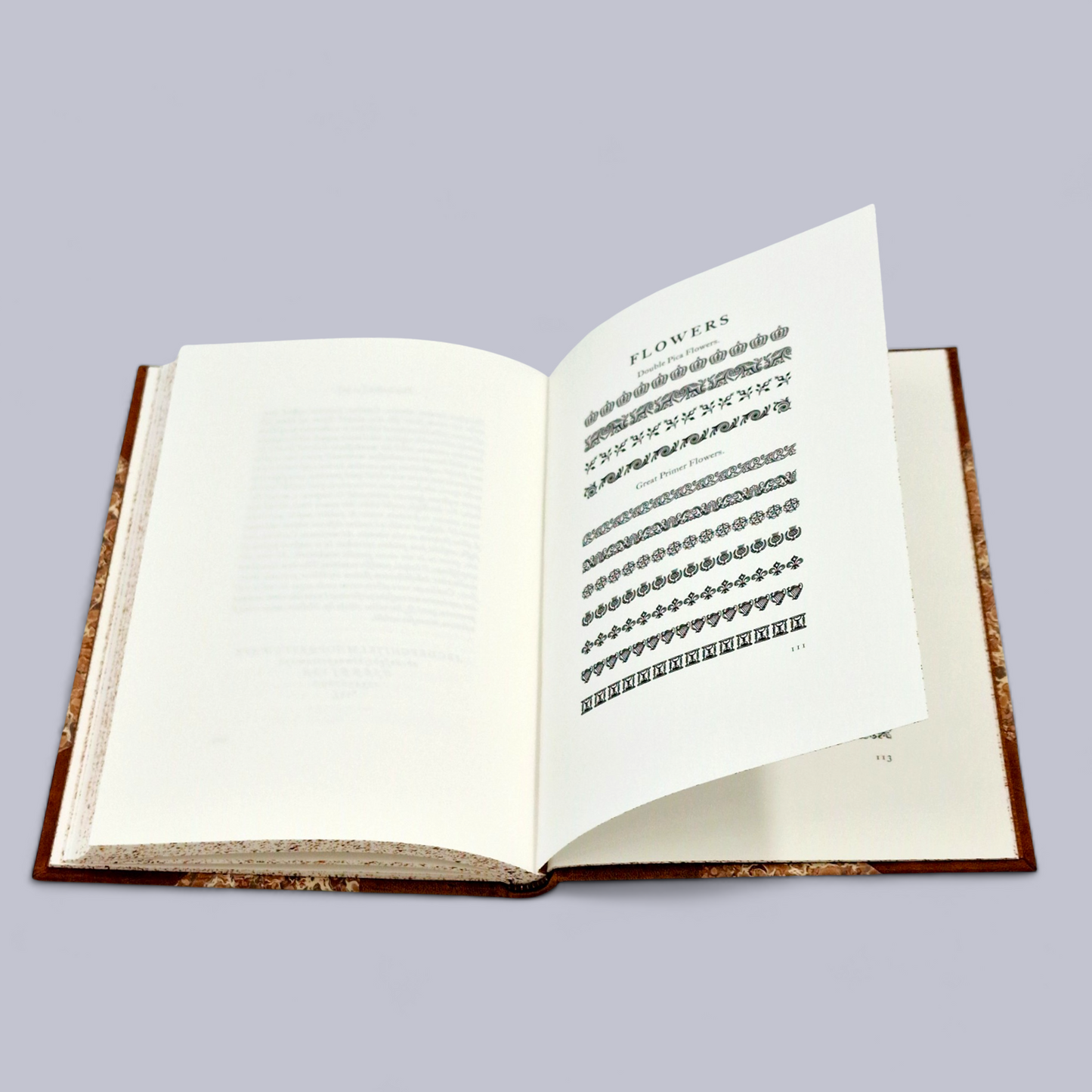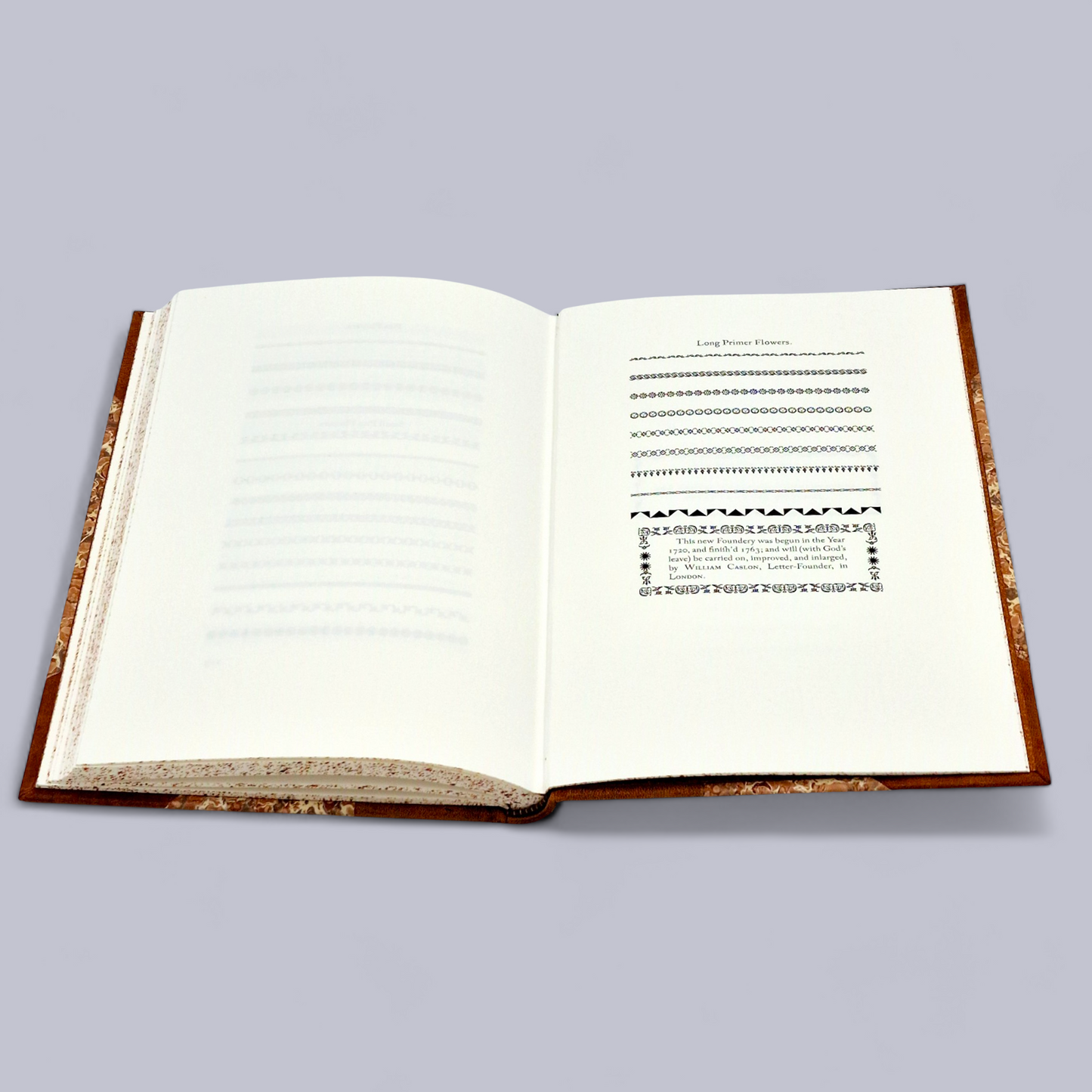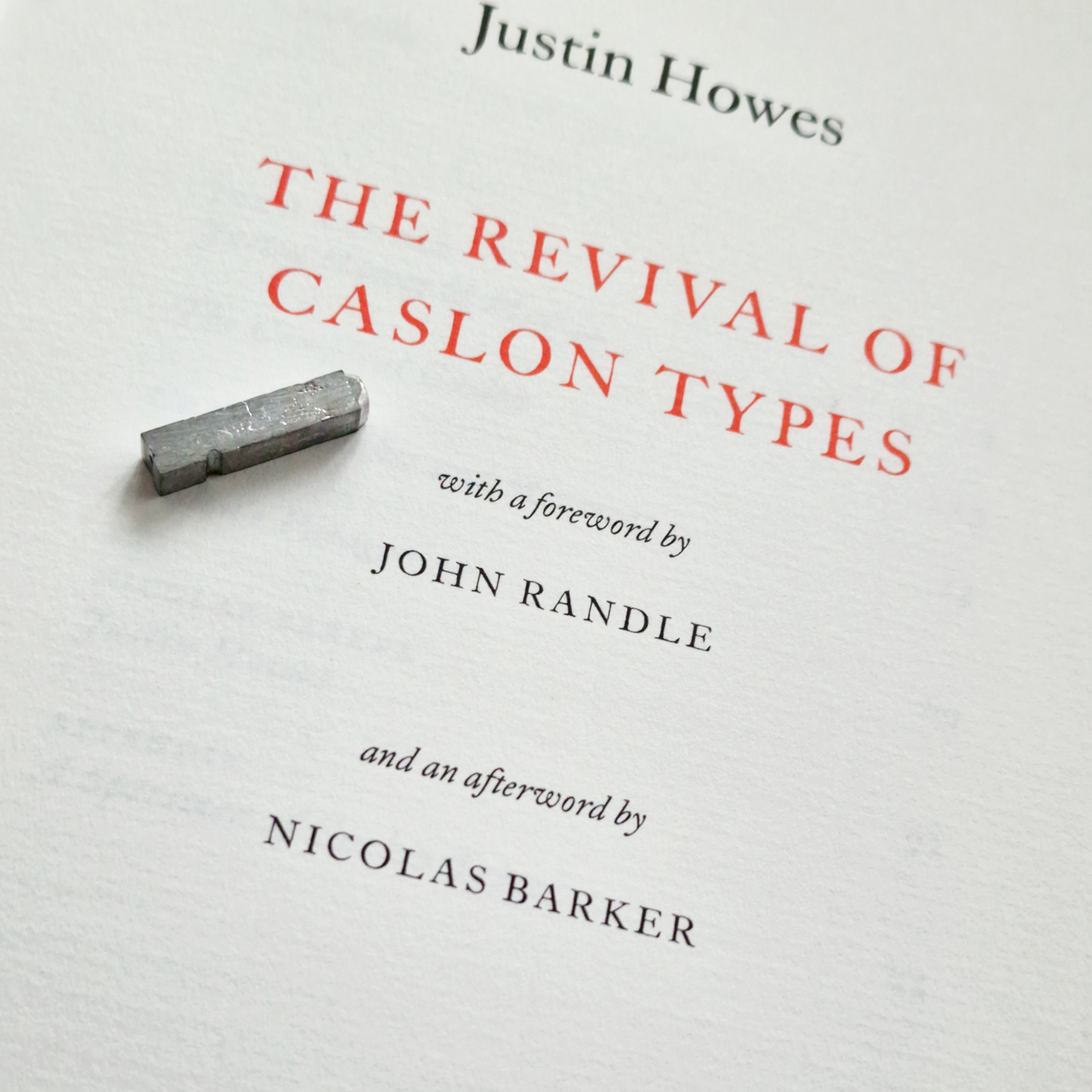SKU:
Justin Howes
The Revival of Caslon Types
The Revival of Caslon Types
Couldn't load pickup availability
The Revival of Caslon Types is the debut publication of Rambler Press, issued in 2013 with the generous support of John Randle of Whittington Press. This finely crafted volume gathers three groundbreaking essays by the late Justin Howes, one of the most important scholars of British typography and type history. The book features an introduction by John Randle and an afterword by Nicolas Barker, making it not only a tribute to Howes but also a landmark in the study of William Caslon’s fonts and their enduring role in English printing.
The essays originally appeared in Matrix, the long-running journal for printers and bibliophiles. In fact, the history of Matrix and the career of Justin Howes are deeply intertwined: his very first published article appeared in Matrix 3, while his last, “Caslon’s Patagonian,” was published in Matrix 24. This continuity illustrates both the longevity of the journal and the depth of Howes’s contribution to typographic scholarship.
Howes’s fascination with Caslon was first sparked in 1986 during an open day at Whittington Press, where he encountered a broadside of Caslon types set in various sizes. The experience, combined with Eric Gill’s praise of Caslon, left a lasting impression. His later research culminated in detailed examinations of the original Caslon punches and matrices, formerly housed at Stephenson Blake in Sheffield and later transferred to the Type Museum in London. In his essay from Matrix 21, reprinted here, Howes analyzed every size of Caslon from 8 to 72 point, noting replaced punches, small-cap substitutions, and typographic inconsistencies. This level of detail remains invaluable to printers, as it clarifies how historic founts were used and how missing or worn characters could be compensated for in practice.
The Revival of Caslon Types is more than a scholarly text—it is a memorial to Justin Howes’s brilliance and passion. The volume closes with Nicolas Barker’s obituary for Howes, originally written for The Independent, which captures both his achievements and his tragically short life. For anyone interested in the history of Caslon fonts, British printing heritage, and typographic revival, this book is essential. Beautifully bound in leather and printed with care, it represents not only Rambler Press’s first publication but also a fitting celebration of a man whose work continues to shape the way designers and historians understand the legacy of Caslon.
DESCRIPTION
First publication of the Rambler Press, 2013. Three essays by Justin Howes on the history and legacy of William Caslon’s typefaces, with an introduction by John Randle (Whittington Press) and an afterword by Nicolas Barker (The Book Collector). Set throughout in LTC Caslon, a faithful digital revival of the classic letter, and printed on Century Laid, a fine cotton paper chosen for its durability and texture.
Hand-bound in half-leather, with a goatskin spine and paper-covered boards, combining elegance with traditional craftsmanship. Issued in a strictly limited edition of 75 numbered copies, each representing a lasting tribute to Howes’s scholarship and to the enduring place of Caslon in British typography.

